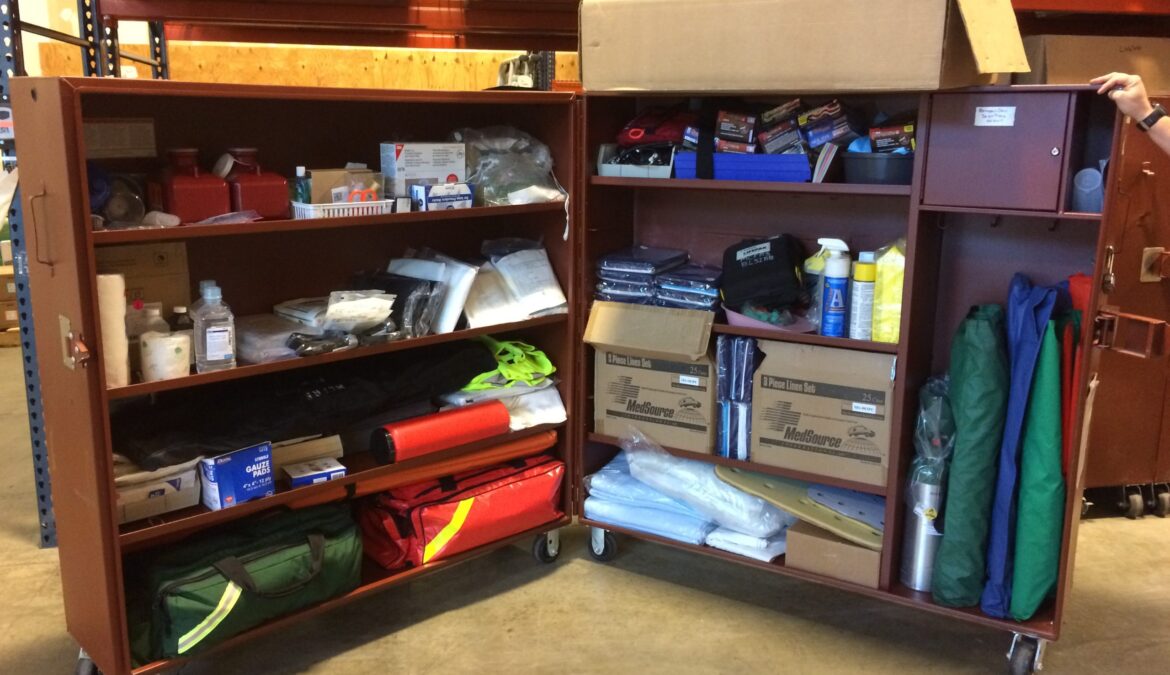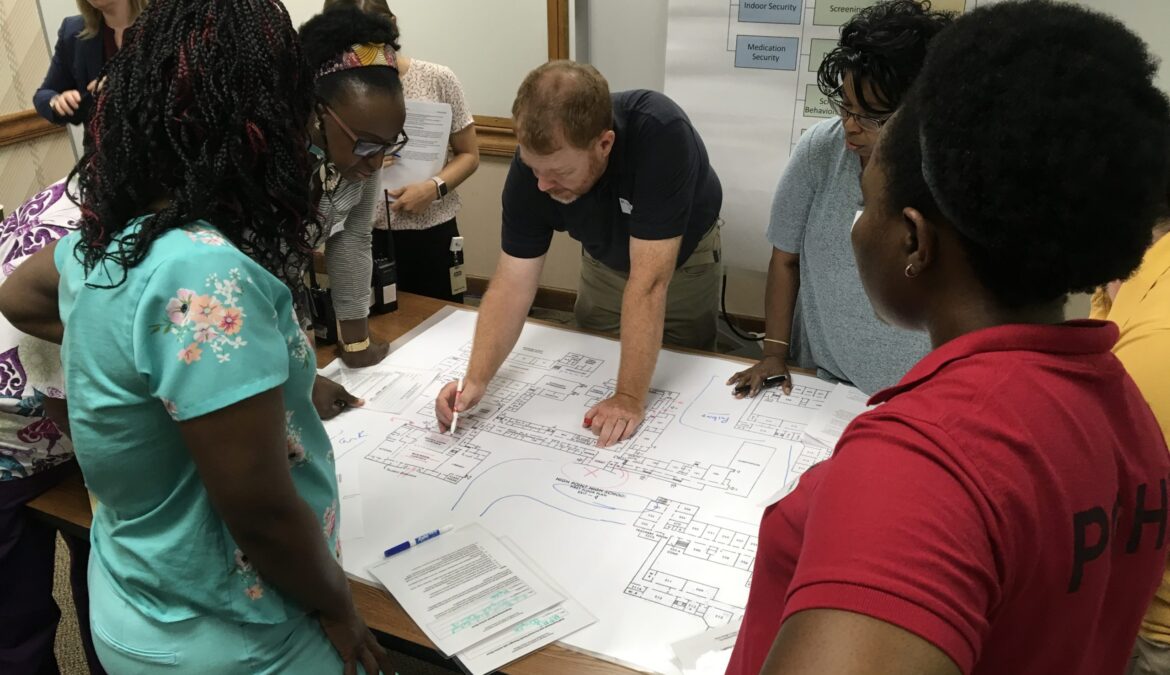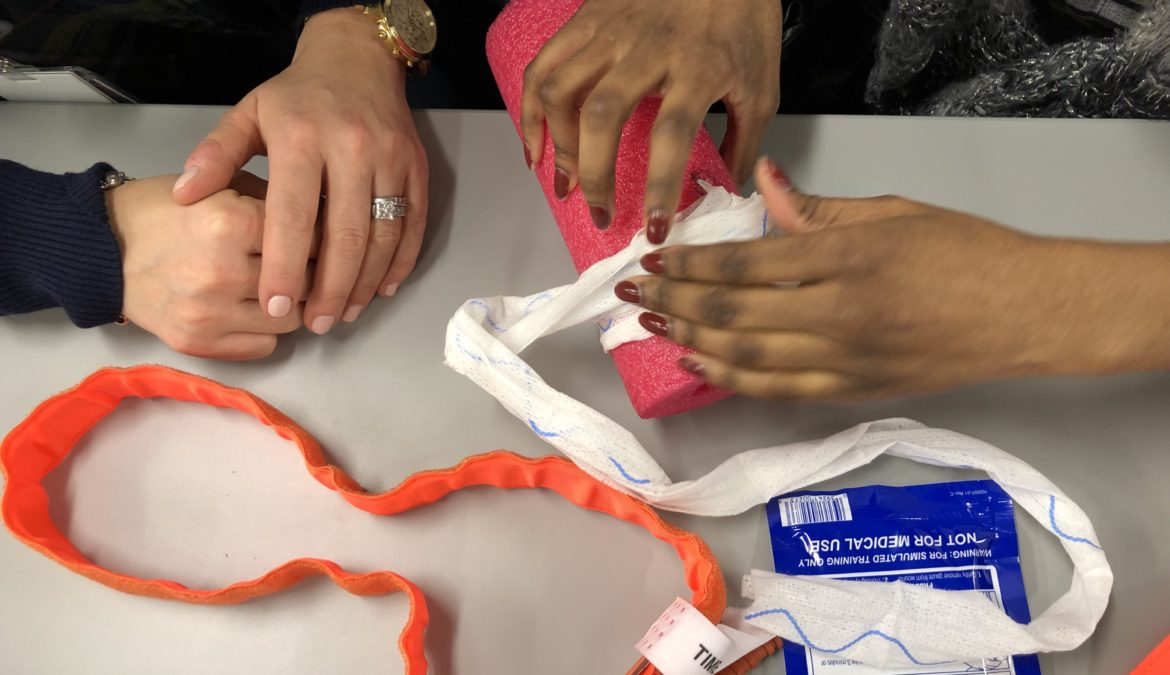Emergency Medical Services (EMS) Surge Capacity
The EMS Surge project provides Advanced Life Support and Basic Life Support surge capability to the Montgomery County Fire and Rescue Service and the Prince George’s County Fire/EMS Department by creating readily accessible and deployable caches of ALS equipment to upgrade existing EMS units as need or place additional in service. This capability also includes deployable caches of BLS equipment to place reserve units in service as additional EMS units during a surge. The second portion of this project includes the Handtevy medication calculation system and supporting training to enhance care for pediatric patients in both counties. This is a cell phone based application for easy field deployment. The final portion of the project outfits pre-existing Medical Ambulance Buses with Wireless Vital signs monitors to allow for simultaneous monitoring or multiple patients with minimal providers.
Incident Command System (ICS)
The MDERS Steering Committee and stakeholder members requested additional ICS capability development at all levels. After Action Reports (AARs) from large-scale regional incidents and twelve Complex Coordinated Attack and ICS workshops led by MDERS staff in 2017 document this need. The after action reports from these workshops cite the need for additional operational coordination at the interagency and interdisciplinary level to enhance emergency response. Utilization of the unified command (UC) structure increases interdisciplinary communication between response partners. AARs document this as an area for improvement, and emphasize the importance of the incident command capability to ensure safety and accountability of personnel.
The ICS capability development consists of numerous smaller projects to support the overall established gap to implement and enhance the usage of ICS by all MDERS stakeholder agencies. The significant scope of this capability involves all agencies in an interjurisdictional and interagency approach. All projects are designed to include the interoperability required to support this vast scope.


For more information please contact Hannah Thomas at hannah.thomas1@Maryland.gov
Tactical Emergency Casualty Care (TECC)
Following the training and initial deployment of these supplies, an unintended positive outcome was that law enforcement officers were utilizing this capability to provide treatment to the general public more so than themselves and other officers. Due to this, the TECC Capability was expanded to include training and the deployment of supplies to the fire departments in both counties.
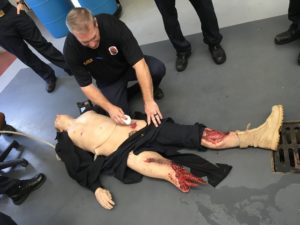

For more information contact Katie Weber at katherine.weber@Maryland.gov
Public Access Trauma Care (PATC)
In 2014, MDERS convened a Tactical Emergency Casualty Care (TECC) workgroup to support the development of the TECC capability in the Maryland National Capital Region. TECC serves as a set of best practice treatment guidelines for trauma care in an austere environment. This capability was initially designed to provide law enforcement officers with the training and supplies to treat specific injury patterns on themselves or other law enforcement officers while EMS was enroute to the scene. Following the training and initial deployment of these supplies and capability, an unintended, yet positive outcome was that law enforcement officers were utilizing this capability to provide treatment to the general public more so than themselves and other officers while waiting for medical assistance. Starting with self- and buddy- treatment among law enforcement officers, this capability quickly expanded to include the treatment of civilians. Emergency medical services and hospitals were also provided with the tools and knowledge to continue caring for these wound patterns.
PATC allows civilians to treat each other with necessary supplies during the critical time period between injury and arrival of public safety or other medical professionals. Treatment of civilians by civilians is critical in treating time-sensitive injuries such as extremity bleeding, compromised airways, sucking chest wounds, and hypothermia, all of which could prove fatal prior to the intervention of public safety or other medical professionals.
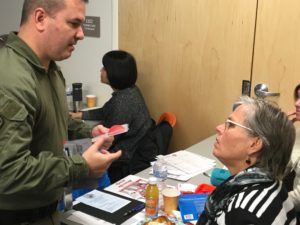

For more information please contact Lauren Collins at Lauren.Collins1@Maryland.gov
Tactical Emergency Medical Services (TEMS)
TEMS is a concept developed within tactical law enforcement operations to care for SWAT officers in an austere environment. Prior to the formation of MDERS, the two counties had already built a Tactical Emergency Medical Services (TEMS) capability. The Prince George’s County Police Department Special Operations Division includes paramedics from the Prince George’s County Fire/EMS Department, assigned to and trained by the police department, to function within the tactical environment. The Montgomery County Police Department operates utilizing MCPD paramedics and EMTs assigned to the Emergency Services Unit within the Special Operations Division. Regardless of deployment model, personnel serve the same purpose and must achieve the same objectives.
Starting in 2015, MDERS began supporting the enhancement of this capability through training and equipment acquisition. The purpose of this capability development plan serves to unite these models, ensuring the same equipment and training are obtained to support interjurisdictional and interagency emergency response. MDERS is not involved with the program management of the respective county programs.
For more information contact Hannah Thomas at hannah.thomas1@Maryland.gov
Small Unmanned Aerial Systems (sUAS)
In 2018, MDERS began working with Fire and EMS, Law Enforcement, and Emergency Management in Montgomery County to establish sUAS programs in their departments. Montgomery County Police now have an operational sUAS program. In 2019, MDERS started working with Prince George’s County Police Department to establish an sUAS Program for the department. Both counties have completed the required FAA Part 107 training and are in the process of purchasing sUAS vehicles for their respective agencies. Montgomery County Office of Emergency Management and Homeland Security is currently working to build the same capability.
For more information, please contact Hannah Thomas at Hannah.Thomas1@Maryland.gov
Command Officer Competency
The Command Officer Competency program provides local fire departments with a process, resources, and tools to build effective incident commanders. The program develops knowledge, skills, and abilities through continuing education, annual written assessments, and simulation lab evaluation. The program delivered large video screens, projectors, computers, and cloud-based fire simulation software to ten worksites in Montgomery and Prince George’s Counties.
For more information please contact Hannah Thomas at Hannah.Thomas1@Maryland.gov
FirstWatch
Firstwatch is an interoperable situational awareness/status monitoring system that transitions raw data into actionable information to support public safety agencies and healthcare facilities and improve patient outcomes. This project initially began with Prince George’s County Fire/EMS Department in 2013. In the years following, MDERS and PGFD provided NCR fire and EMS departments with this capability. This has built a common regional tool that allows for real-time situational awareness based on input from electronic patient care reports, records management systems, computer-aided dispatch systems, and a patient care quality assurance model.
For more information please contact Hannah Thomas at hannah.thomas1@Maryland.gov
SWAT Operations
Critical incidents, such as active assailant events, terrorist activities and complex coordinated attacks, are dynamic and evolving matters necessitating highly trained individuals and teams to neutralize these threats. A well-prepared individual, the organization of effective teams, the appropriate training of operators/assaulters, as well as their commanders, and the appropriate use of equipment and technology are essential elements in the success matrix of preparing for and responding to these critical incidents.
The Montgomery County Police Department (MCPD) Special Operations Division (SOD) Tactical Team and the Prince George’s County Police Department (PGPD) Special Operations Division (SOD) Emergency Services Team have identified four capabilities to help each, and the region, meet the response demands for these types of critical incidents. These capabilities are breaching, command, close quarter battle (CQB), and sniper operations. MDERS has and continues to support tactical training for both SOD teams.
For more information, please contact Hannah Thomas at hannah.thomas1@Maryland.gov



